MWC Depthmaster 1000m Ronda 715li Stainless Steel Helium Valve GTLS
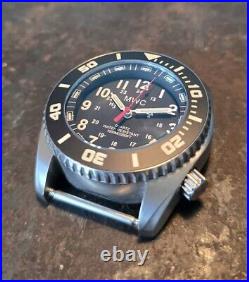
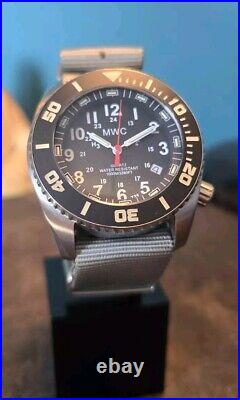
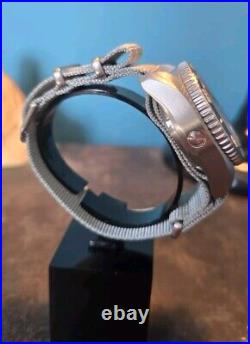

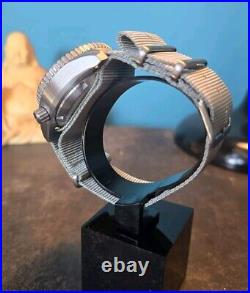
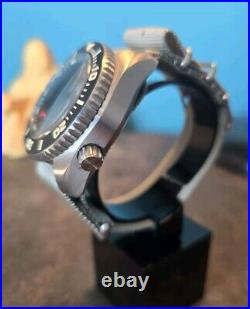



Very lightly used mwc Depthmaster watch in great condition. This model also has tritium GTLS tubes for maximum nighttime and low light performance. The Depthmaster range is specifically designed for use by professional divers under challenging conditions. All MWC 100ATM models are fitted with a helium escape valve, people often ask us how helium gets into a dive watch in the first place and the answer is very simple, essentially a helium molecule is among the smallest of all molecules. What this means is because they are so small even though the seals are working fine to keep water out the helium molecules can still get through and enter the watch even though other gases and water cannot. The main users professionally of watches with helium escape valves are saturation divers who spend long periods of time at great depth with high pressure, the result is that the helium molecules can build up inside the watch creating pressure inside the case, this can inflict serious damage to the watch and even blow out the crystal or crown when it's unscrewed, this is potentially extremely dangerous if for example you are just checking or resetting the time, it can also potentially write off the watch. The valve is only one way, so it lets the helium out but prevents anything external from getting in. For anyone who does not know why helium is an issue, it's important to understand why helium is employed for deep diving. The reason is that helium is one of the very few gasses which does not have negative effects such as we see with nitrogen which causes nitrogen narcosis, consequently helium is used to replace nitrogen in most deep-sea mixed gas diving applications. In some situations, professional divers can operate at great depth for extended periods where they live in dry environments pressurised with an oxygen/helium mix. When the divers surface and decompress after days or even sometimes weeks this gas must be removed to prevent a problem as mentioned earlier such as the crystal or crown being blown out which can potentially injure or even blind someone. The reality is that most divers will not be living in a pressurized environment for days or weeks on end, this means they will have no need for a watch equipped with a helium valve, regardless of how deep they dive but with deep diver watches such as our 100ATM range, it's essential the valve is there just in case it's needed because the watch would not be fit for purpose without it. The movement is a high-quality Swiss Ronda 715li with 10 Year Battery Life and a hacking function to enable synchronization. Movement: Swiss Ronda 715li Quartz with 10-Year Battery Life. Water Resistance: 100ATM / 3,280ft / 1000M. Width: Inc Crown 47 mm (Exc Crown 44 mm). Bezel Type: Unidirectional Non-Reflective with Ceramic Insert. Crystal Type: Sapphire with Anti-Reflective Coating. Lug to Lug: 48 mm. Illumination: GTLS Tritium on markers and hands Luminova on the bezel.
Strap: 24 mm NATO Webbing Strap.
